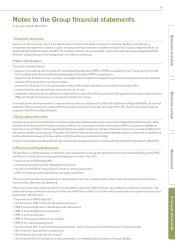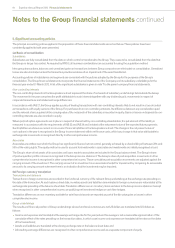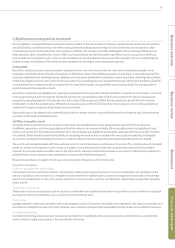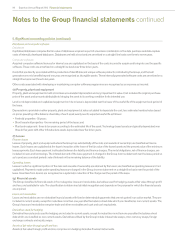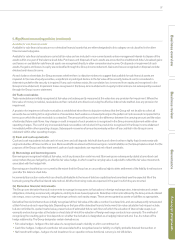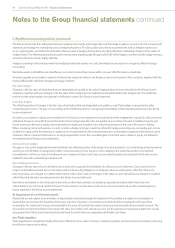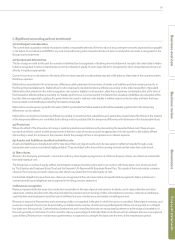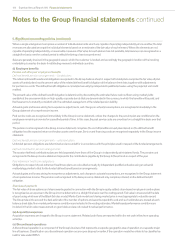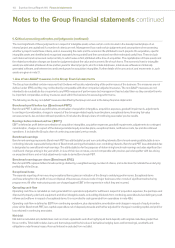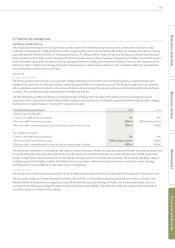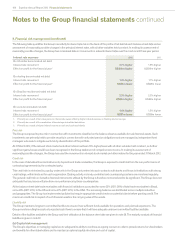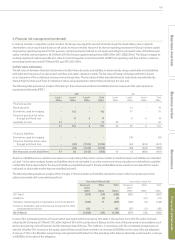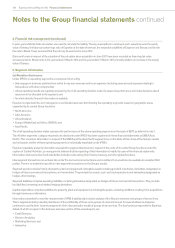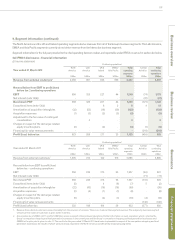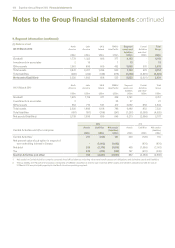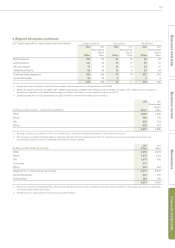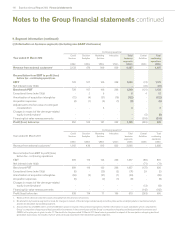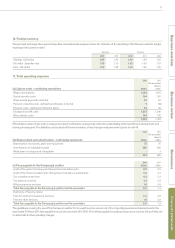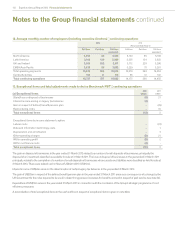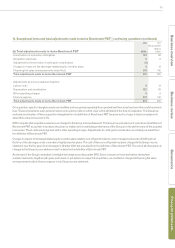Experian 2012 Annual Report Download - page 105
Download and view the complete annual report
Please find page 105 of the 2012 Experian annual report below. You can navigate through the pages in the report by either clicking on the pages listed below, or by using the keyword search tool below to find specific information within the annual report.
103
Governance Financial statementsBusiness reviewBusiness overview
8. Financial risk management
(a) Financial risk factors
The Group’s activities expose it to a variety of financial risks: market risk (including foreign exchange risk, interest rate risk and price risk),
credit risk and liquidity risk. The Group’s financial risk management focuses on the unpredictability of financial markets and seeks to minimise
potentially adverse effects on the Group’s financial performance. The Group seeks to reduce its exposure to financial risks and uses derivative
financial instruments to hedge certain risk exposures. The Group also ensures surplus funds are managed and controlled in a prudent manner
which will protect capital sums invested and ensure adequate short-term liquidity, whilst maximising returns. Financial risks represent part of
the Group’s risks in relation to its strategy and business objectives and a full discussion of all such risks is contained within the separate risks
and uncertainties section of the annual report.
Market risk
Foreign exchange risk
The Group operates internationally and is exposed to foreign exchange risk from future commercial transactions, recognised assets and
liabilities and investments in, and loans between, undertakings with different functional currencies. The Group manages such risk, primarily
within undertakings whose functional currencies are US dollars, by borrowing in the relevant currencies and using forward foreign exchange
contracts. The principal transaction exposures are to sterling and the euro.
The following table quantifies the Group’s sensitivity to foreign exchange risk on the basis of the profile of foreign exchange transaction
exposures, and an assessment of reasonably possible changes in such exposures. In making its assessment of reasonably possible changes,
the Group has considered data on movements in relevant currencies.
Foreign exchange exposure 2012 2011
Sterling against US dollar:
Currency strengthening/weakening 9% 10%
Effect on profit for the financial year US$nil US$1m higher/lower
Effect on other comprehensive income and other components of equity US$nil US$nil
Euro against US dollar:
Currency strengthening/weakening 8% 10%
Effect on profit for the financial year US$1m higher/lower US$nil
Effect on other comprehensive income and other components of equity US$nil US$nil
The Group has investments in undertakings with other functional currencies, whose net assets are exposed to foreign exchange translation risk.
In order to reduce the impact of currency fluctuations on the value of such entities, the Group has a policy of borrowing in sterling and euros,
as well as in US dollars, and of entering into forward foreign exchange contracts in the relevant currencies. The sensitivity reported in respect
of sterling against the US dollar is wholly attributable to such net exposures. Otherwise the above analysis excludes the impact of foreign
exchange risk on the translation of the net assets of such undertakings.
Interest rate risk
The Group’s interest rate risk arises principally from its net debt and the portions thereof at variable rates which expose the Group to such risk.
The Group has a policy of normally maintaining between 30% and 70% of net funding at rates that are fixed for more than six months. The
Group’s interest rate exposure is managed by the use of fixed and floating rate borrowings and by the use of interest rate swaps and cross
currency interest rate swaps to adjust the balance of fixed and floating rate liabilities. The Group also mixes the duration of its borrowings to
smooth the impact of interest rate fluctuations.


